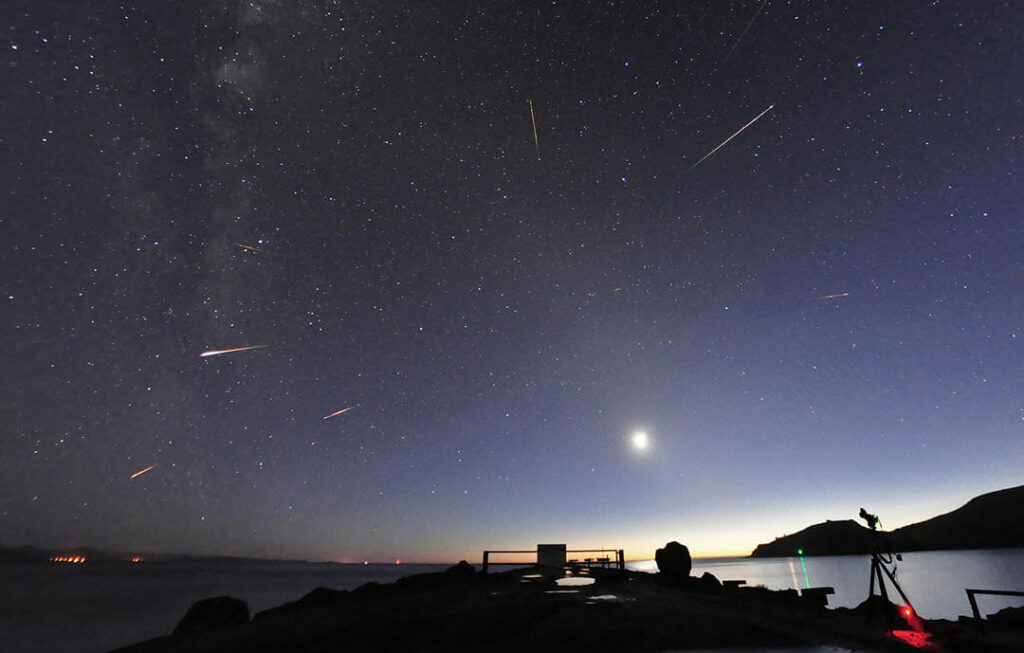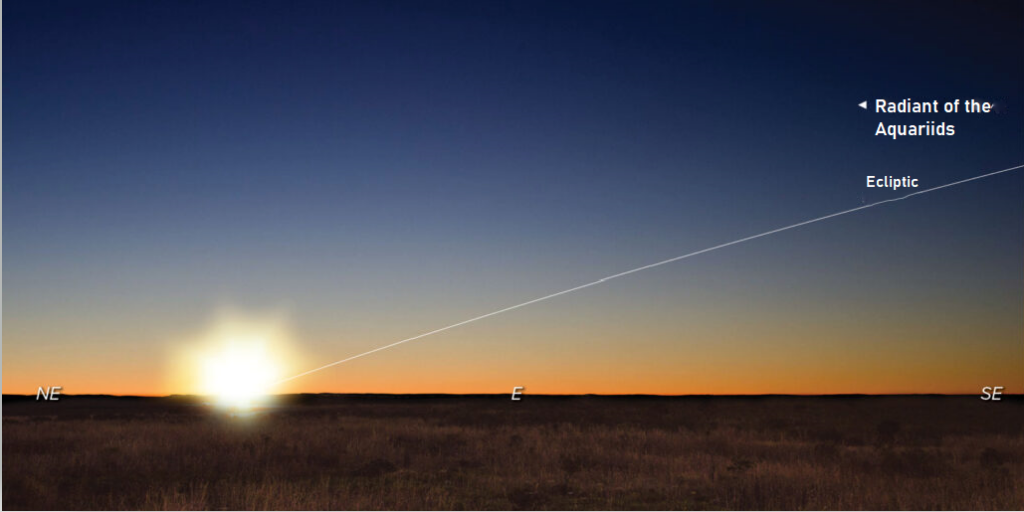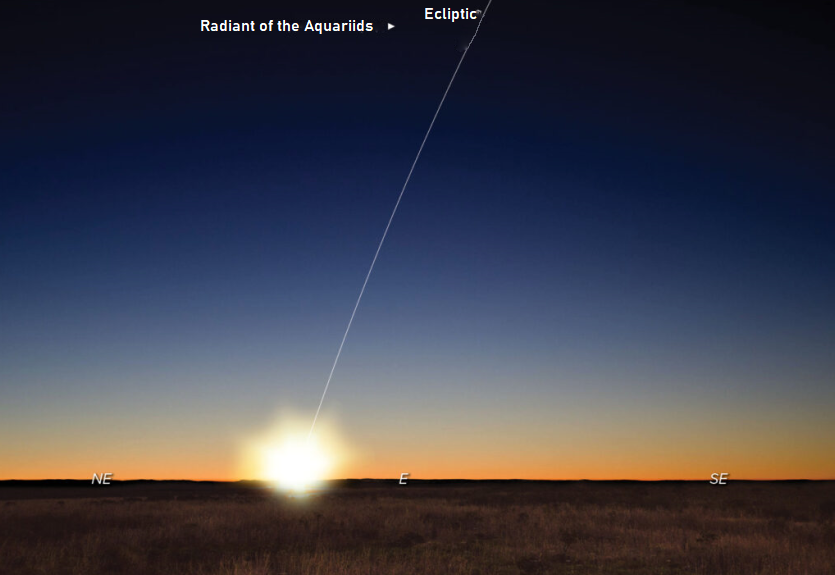At the beginning of May, our planet plunges into the densest part of the meteor swarm, η-Aquarid. Dust particles related to it, entering the earth’s atmosphere, form meteors that “fly out” from the constellation Aquarius. At the maximum, falling on May 5-6, they can be observed more than 60 per hour. Why is this powerful stream not as popular as, for example, the August Perseids?

Firstly, the radiant η-Aquarid — an imaginary point on the celestial sphere from where meteors “fly out” — appears above the horizon before dawn in May, when most people usually sleep. And secondly, in the middle latitudes of the Northern Hemisphere, it rises just a couple of hours before sunrise, that is, most of the visibility of the stream falls at morning twilight, when the sky is already too bright. Residents of the equatorial regions of the Earth and the Southern Hemisphere have an absolute advantage here.


The η-Aquarids are associated with the famous Halley comet (1P/Halley), returning to the Sun with a period of 73 to 78 years. It first appeared in the inner regions of the Solar System about 10 thousand years ago, and since that time has managed to throw out a huge amount of dust particles distributed along its orbit relatively evenly. Therefore, despite that next year the comet will pass aphelion (the farthest point of the orbit from the Sun), the power of the associated meteor shower is expected to be almost the same as in the spring of 1986, shortly after the perihelion. As it moves around our star in the direction opposite to the direction of rotation of the large planets, the particles of the η-Aquarid flow collide with the Earth “on counter courses” and enter the Earth’s atmosphere at a speed of 66 km/s. Due to this, they form numerous bright meteors and even fireballs.
Although it is rather inconvenient to observe the η-Aquarids in our latitudes, many astronomy enthusiasts still wake up early in the morning and direct their gaze to the southeast, where the radiant of the stream is located. This year, at the beginning of May, the young Moon will disappear behind the horizon in the evening, so in areas far from the sources of artificial illumination, there are many chances to see several “fiery greetings” from Halley’s distant comet.
Follow us on Twitter to get the most interesting space news in time
https://twitter.com/ust_magazine
